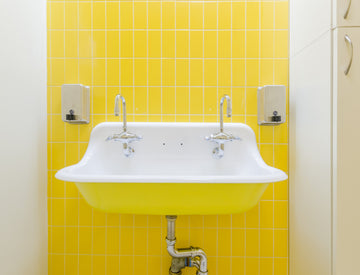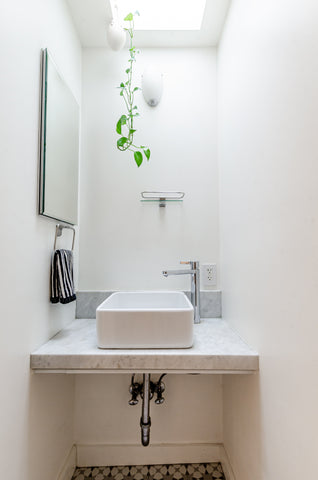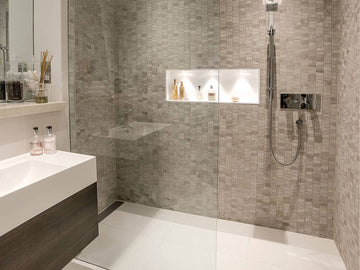Knowing About The Basics Of Sink Plumbing In The Bathroom
by LucasAlbert on Jun 18, 2021

It is true that not everyone has regular access to or knowledge of bathroom sink plumbing in their daily lives, as most people settle down to use them after moving in, or leave them to the head of the family such as their husband or father. Therefore there are many people who are not knowing about the names of some bathroom sink plumbing components at all. Plumbing involving bathroom sinks includes different components, some of which may leak, clog or break. This is when you need to buy parts, look something up or call a plumber, and it will make the process easier if you know the names of the parts involved.

Shut-off Valves
A shut-off valve is a small valve (usually metal, but sometimes plastic) that sits between the inlet pipe and the water supply hose or pipe that connects to the sink faucet tailpiece. Most have an oval, football-shaped handle that you turn to open or close the valve. Also called stop valves, shut-off valves allow you to turn off the water supply at the sink, rather than shutting off the water supply to the entire house. They come in pairs: one valve controls hot water; the other controls cold water. Many shut-off valves use compression fittings, so they can be installed onto the water pipes without welding, but you will need to turn off the water to the house while you are going to replace the shut-off valve.
Supply Tubes
From the end of the sink faucet to the shut-off valve, you'll usually see a pair of narrow supply tubes. They can be made of braided metal mesh, plastic mesh (usually white), solid plastic (usually gray), or chrome-plated copper. They are usually attached to the tailpiece and shutoff valve with the included nuts. These supply tubes sometimes fail and it is not uncommon for them to need to be replaced.
Sink Pop-up
The pop-up of the bathroom sink is a feature comprising of components above and below the sink. Components below the sink include a darin tailpiece and a horizontal rod. The rod moves the sink stopper either up or down.
When unblocking the sink drain, you should start with removing the horizontal rod to pull the stopper outwards and clear any buildup that may have collected on the sink stopper.
Drain Tailpiece
The sink tailpiece is a straight section of pipe that attaches to the bottom of the sink drain fitting. Typically, the tailpiece is attached to the drain fitting with a sliding nut -- a threaded ring that can be tightened and loosened by hand (or gently persuaded with slotted pliers). The slide nut fitting serves a dual purpose because if you have something fall into the sink drain, you can remove the slide nut fitting to retrieve your item. Below the nut is a conical plastic washer that creates a watertight seal.
The P-trap
The P-trap consists of two parts: the U-bend and the trap arm. the U-bend is "U-shaped", with one side shorter than the corresponding side. DIY enthusiasts often put it on backwards. The longer side should be secured to the end of the sink pop-up, while the shorter side should be attached to the trap arm. These two curved sections allow your sink to eventually connect to the sewer line. The bent trap is a simple safety feature that holds standing water, thus preventing sewer gas from rising and draining out of the sink drain. the bottom of the U-bend remains filled with water so that gas cannot pass through. Each time you flush water down the drain, the old water in the bend is flushed away and replaced with new water. the parts of the P-trap are attached with a slip nut, although in some older houses you may see traps that are glued with solvent. If you have such a trap, it is best to replace it with a trap that can be removed, such as a slip-nut fitting.

Drain Pipe
The sink drain pipe/line is the drain that connects the sink to the main drain that runs through the bathroom wall or floor. It is attached to the trap arm by another slip nut. Most bathroom sink drains are 1.5 inches in diameter, but can be smaller or larger.




